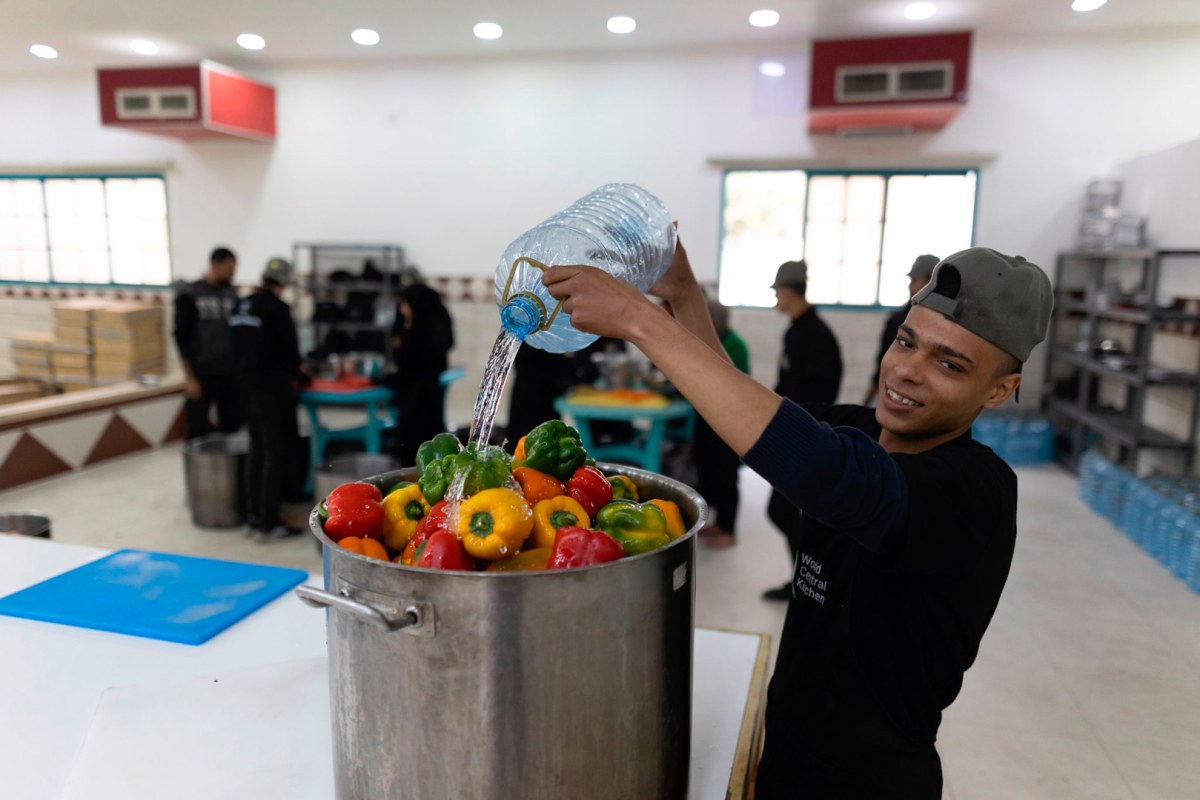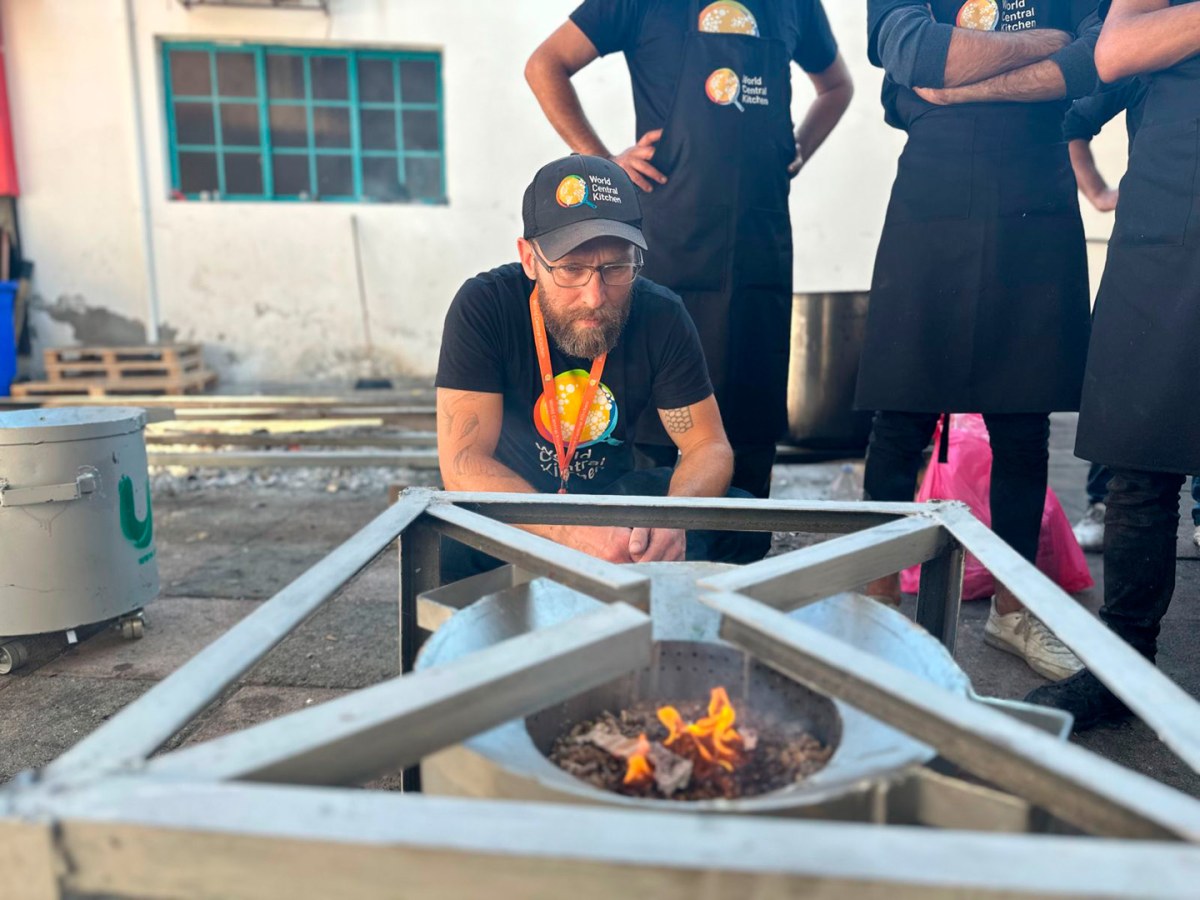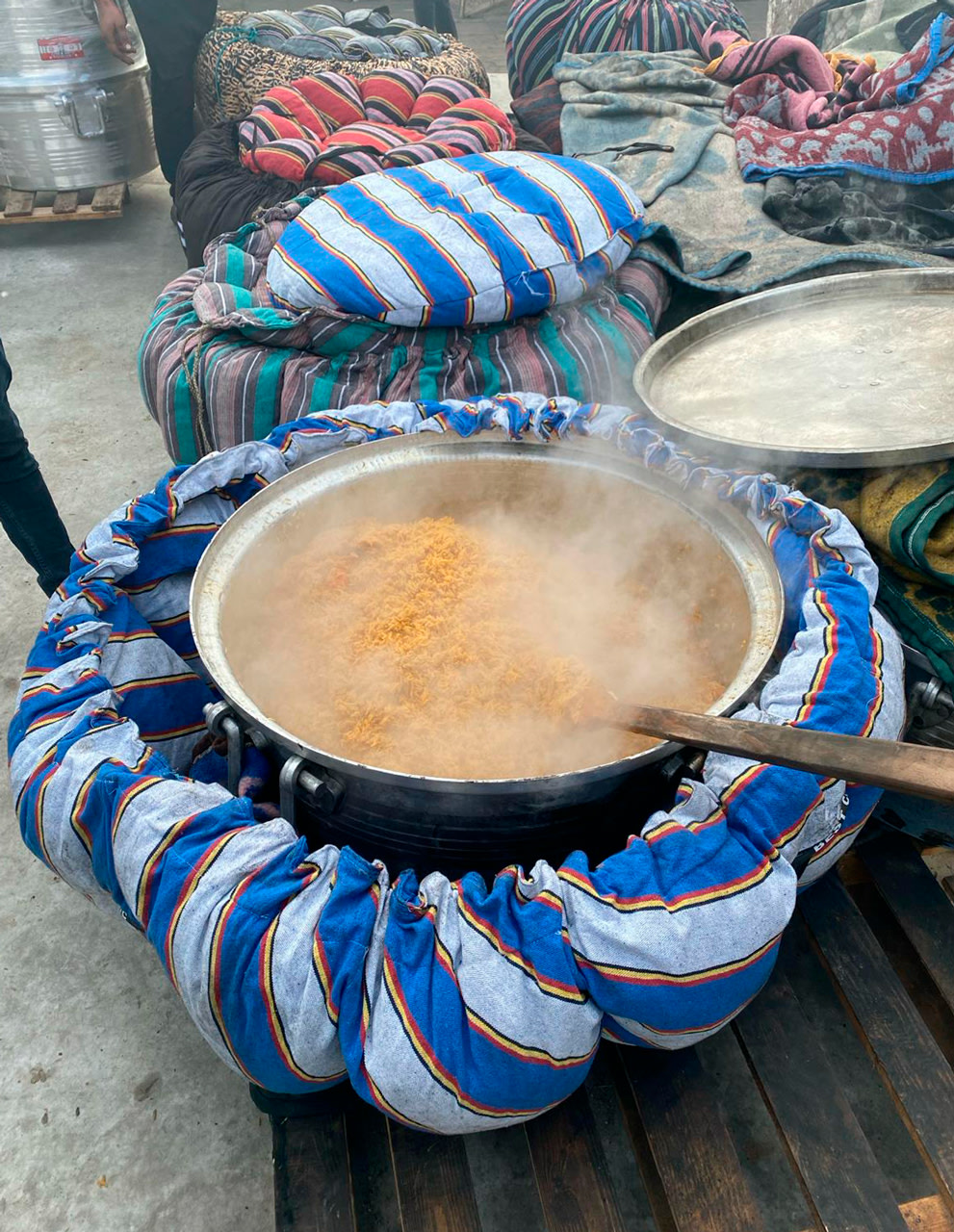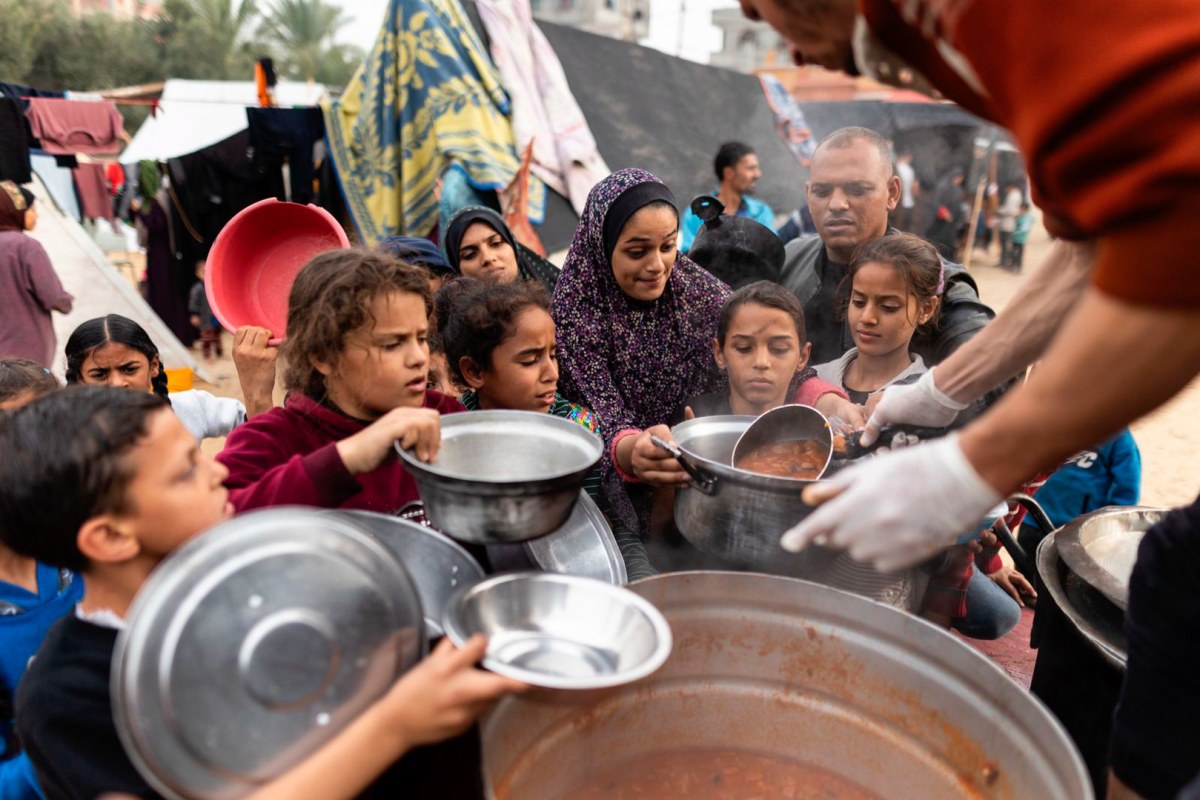Chef José Andrés is on a Jordanian military airplane, flying over Northern Gaza. Behind him, he explains on a video, stand rows of containers filled with medicine and outfitted with parachutes, ready to be dropped to precise locations. They also contain food, thanks to World Central Kitchen, the Andrés-led nonprofit, and he’s on board to witness its first air drop.
When disaster strikes, manmade or otherwise, World Central Kitchen is rarely far behind. Photos and videos of Andrés against the backdrop of fires, hurricanes, war, and now a military jet, are just as common as those taken inside a kitchen at one of his 30-plus restaurants.
[Photo: World Central Kitchen]
Over nearly 14 years of existence, World Central Kitchen has become a kind of food version of Médecins Sans Frontières—Doctors Without Borders—mobilizing local communities and partner organizations, sending in trained chefs and other workers fast. The organization has so far sent more than 1,000 truckloads of food to Gaza from Cairo. It’s also operating in Ukraine, as the country’s war with Russia enters a third year, and in Chile, as deadly wildfires rage.

[Photo: World Central Kitchen]
But the group’s recent operations in Gaza have been, according to World Central Kitchen director of emergency response Sam Bloch, the most complex and logistically challenging he’s ever experienced in nearly two decades of aid work. Bloch just returned from 40 days in Gaza, traveling the length of the territory to deliver food to Palestinians.
So far, World Central Kitchen has distributed 34 million meals in Gaza, by land, by air, and soon, hopefully, by sea. According to World Central Kitchen CEO Erin Gore, the organization joined Greece, the Netherlands, France, and Britain to deliver supplies on a boat currently traveling across the Mediterranean.
In a recent interview, Gore and Bloch described more about World Central Kitchen’s efforts and progress in Gaza.

[Photo: World Central Kitchen]
FC: First, thank you for your efforts in Gaza and around the world. What do the first days of your response typically look like?
Sam Bloch: Every disaster is different, every community is different. We go in and rapidly involve the community in our response as quickly as possible. We’re no stranger to logistically complex responses. This one definitely challenged all of our teams to think outside the box in order to get such a large quantity of food into Gaza, but also the right kind of food.

[Photo: World Central Kitchen]
FC: What’s the right kind of food?
SB: Our team started speaking immediately to Palestinians to be sure that the food we were sending was culturally relevant. For example, our kits are the only ones I’ve seen with za’atar. Everybody else is sending food that has the nutrients to keep people alive, but it doesn’t really feed their soul.

[Photo: World Central Kitchen]
FC: What else was in them?
SB: Hummus, cheese, dates, canned beef, tahina…
Erin Gore: Rice, chickpea, tuna, beans, lentils, sardines, fava beans—lots of beans.
SB: World Central Kitchen immediately challenged a rule that only food that’s ready to eat can cross the border—the outside mindset being that Palestineans can’t cook for themselves without propane or running water. But food that’s ready to eat takes up two to four times as much space inside trucks in this already clogged supply chain. We were limited by how many trucks could cross each day, so we had to push to send food that could be cooked. It’s more dignified, more culturally appropriate, and more efficient. Of course, we then needed to supply water and the means to cook without propane.

[Photo: World Central Kitchen]
FC: Right, because propane and other fuel used for cooking aren’t allowed in.
SB: When I was in Rafah, I saw that almost every tree in southern Gaza had been cut down to burn for cooking. That was in the beginning. As I was leaving, people were resorting to digging up their roots to burn.
To design a stove to use in Gaza, we had to start with available fuel sources. There is a large processing plant in Cairo that imports scrap wood from around the world, then processes and exports it to Europe for wood stoves for home heating. So our team designed a very large, industrial pellet stove using existing technology.
EG: We also found a way to give these wood pellets an exponentially longer life. We worked with a company called Wonderbag to create something like a koozie for a really big cooking pot. It keeps food warm for longer periods of time so more people can eat hot meals. We can also move food from a pot to the Wonderbag to keep the food cooking while another pot gets going on the stove.

[Photo: World Central Kitchen]
FC: It sounds like you’re constantly adapting on the fly.
SB: The situation is extremely dynamic. Our biggest plan is to adapt. Palestinians on our team were able to adapt the stoves we sent in to make saj, an unleavened flatbread. Normally, it takes about 20 seconds to cook one piece of saj on a wood or charcoal stove, they found a way to do it on our pellet stove and now one piece takes six seconds to cook. Our main kitchen produces 17,000 pieces of saj per day.

[Photo: World Central Kitchen]
EG: Our team is small in terms of the impact we have, because we work hand-in-hand with the community. Most people want to help when disaster hits, but sometimes what we think is the best way to help isn’t actually what the community needs. We have the muscles, the food awareness, we can cut through red tape to help feed millions and millions of people. But if we show up thinking we have all the answers, guess what? We would not be able to distribute 34 million meals in Gaza.
